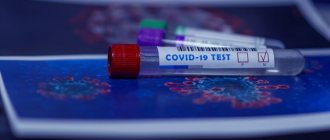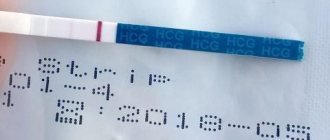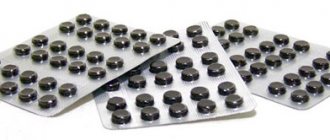A biochemistry test is taken when diagnosing various diseases, in the presence of abnormalities in a general blood test, as well as to monitor the effectiveness of the treatment process.
Blood drawings are carried out by experienced nurses in our clinic or at home. The finished results are automatically sent to the patient’s email within 1-2 days.
On a note! Blood is the basis of life. The slightest change in its composition is a consequence of deviations in the functioning of internal organs, metabolic systems, or is due to the influence of negative environmental factors (poor ecology, hazardous production). A doctor of any specialization, using this analysis in his practice, receives a reliable diagnostic tool.
Depending on the list of complaints and the general clinical picture, the doctor may prescribe both a standard set of “blood biochemistry” and the study of individual indicators.
What is a biochemical analysis and why is it prescribed?
The content of the article
Biochemical blood testing is the most important diagnostic measure, which makes it possible to obtain an accurate assessment of lipid, protein and carbohydrate metabolism. These indicators are important for a huge number of pathologies and diseases, and therefore blood biochemistry is considered one of the basic tests of laboratory diagnostics.
The content of biochemical substances is assessed by their concentration, which is compared with normal values. If the concentration of a particular factor deviates from the norm, conclusions are drawn about the likelihood of a particular disease.
Diagnosis of possible violations
Using a blood test for biochemistry, you can diagnose many problems and pathologies in the human body, but deviation from the norm, especially in women, does not always carry a dangerous omen. The same pregnancy can affect many indicators, which should not be considered something bad.
To confirm or refute a possible diagnosis, after deciphering, the attending physician will prescribe additional tests, and also advise which specialists should be visited and what should be changed in lifestyle and diet to restore normal biochemistry parameters.
Preparing for blood collection
A biochemical blood test, like any other, requires simple preparation. These measures must be taken very carefully, since any violation will affect the properties and composition of the blood. Conditions for accurate results:
- Have a low-fat dinner the night before donating blood, and do not drink coffee or strong tea. Immediately before donating blood in the morning, do not eat anything, you can only drink water.
- A day before the appointed date, refrain from visiting the bathhouse or sauna and do not overwork yourself.
- Donate blood for biochemistry before other procedures, if any have been prescribed (x-rays, injections, IVs, massage).
- To determine your sugar level most accurately, do not drink coffee in the morning or even brush your teeth.
- If you are taking medications that reduce lipid (fat) concentrations, you should stop taking them two weeks before the test, if possible.
- Limit the use of hormones, antibiotics, diuretics and other drugs for a while. The doctor referring you for the procedure will tell you for how long and which tablets will need to be postponed.
If a repeat examination is scheduled, take it in the same laboratory and at approximately the same time. Each laboratory uses its own methods and reagents, so results will vary between laboratories.
General information
Biochemical blood test is one of the most popular research methods for patients and doctors. If you clearly know what a biochemical test of blood from a vein shows, you can identify a number of serious ailments in the early stages, including viral hepatitis , diabetes mellitus , and malignant neoplasms .
Early detection of such pathologies makes it possible to apply the correct treatment and cure them. The nurse collects blood for testing within a few minutes. Every patient should understand that this procedure does not cause any discomfort. The answer to the question of where blood is taken for analysis is clear: from a vein.
Speaking about what a biochemical blood test is and what is included in it, it should be taken into account that the results obtained are actually a kind of reflection of the general condition of the body. However, when trying to independently understand whether the analysis is normal or whether there are certain deviations from the normal value, it is important to understand what LDL is, what CPK is (CPK - creatine phosphokinase), to understand what urea (urea), etc.
General information about blood biochemistry analysis - what it is and what you can learn by doing it, you will receive from this article. How much it costs to conduct such an analysis, how many days it takes to get results, should be found out directly in the laboratory where the patient intends to conduct this study.
What indicators are most important in a biochemical blood test?
The diagnostic markers of a biochemical blood test are the following indicators:
- Blood glucose
. The most important test demonstrating the functionality and normal functioning of the endocrine system, liver and pancreas. This indicator is the main diagnostic parameter in identifying diabetes mellitus. - Total bilirubin
. This substance is a pigment that is formed as a result of the destruction of hemoglobin. This happens with the active destruction of red blood cells, with disruption of the liver (jaundice, cirrhosis), as well as as a result of disturbances in the outflow of bile. - Direct and indirect bilirubin. This indicator represents a separate fraction of the total bilirubin level and increases with disturbances of bile outflow, which is primarily characteristic of jaundice. The difference between the values of total bilirubin and the fraction of direct bilirubin is called an indirect indicator.
- AST (AST) and ALT (ALT)
- these indicators are enzymes, the main place of production of which is liver cells. That is why an increase in the concentration of these substances in the blood may indicate destructive processes in the liver, heart and other internal organs. - Gamma-GT
(gamma-glutamyltransferase) is an enzyme whose increased concentration indicates pathology of the liver or pancreas. Alkaline phosphatase is another enzymatic factor that is normally detected in the blood in small quantities. An increase in alkaline phosphatase levels indicates diseases of the liver and bone structures. - Total cholesterol
is an important indicator that demonstrates liver function and the patient’s nutritional pattern, since this substance enters the body with food. Low-density lipoproteins (LDL) are the most important characteristic that can early signal a high risk of the formation of atherosclerotic plaques in blood vessels. - Triglycerides
are one of the main characteristics of fat metabolism in the body. - Total protein
- demonstrates the overall level of protein components in the blood, and allows you to identify disorders in the liver and the presence of an infectious-inflammatory process.
Also, a biochemical blood test takes into account the level of albumin, potassium, sodium, chlorine, iron, creatinine, uric acid, urea and C-reactive protein.
Glucose
Glucose is considered the main indicator of carbohydrate metabolism. It is the main energy product that enters the cell, since the vital activity of the cell depends specifically on oxygen and glucose. After a person has eaten, glucose enters the liver, and there it is utilized in the form of glycogen . These processes are controlled by hormones - insulin and glucagon . Due to a lack of glucose in the blood, hypoglycemia develops; its excess indicates that hyperglycemia is occurring.
Violation of blood glucose concentration occurs in the following cases:
Hypoglycemia
- with prolonged fasting;
- in case of malabsorption of carbohydrates - with colitis , enteritis, etc.;
- with hypothyroidism;
- for chronic liver pathologies;
- with chronic adrenal insufficiency;
- with hypopituitarism;
- in case of overdose of insulin or hypoglycemic drugs taken orally;
- for meningitis , encephalitis , insulinoma, meningoencephalitis, sarcoidosis .
Hyperglycemia
- for diabetes mellitus of the first and second types;
- with thyrotoxicosis;
- in case of development of a pituitary ;
- with the development of tumors of the adrenal cortex;
- with pheochromocytoma;
- in people who practice treatment with glucocorticoids;
- for epilepsy ;
- for injuries and brain tumors;
- with psycho-emotional agitation;
- if carbon monoxide poisoning occurs.
Explanation: normal biochemical blood test indicators in the table
| Index | Norm |
| Albumin | 35-45 g/l |
| Total protein | 63-87 g/l |
| Globulins | 21.2-34.9 g/l |
| Creatinine | 44-97 µmol/l in women and 62-124 µmol/l in men |
| Urea | 2.5-8.3 mmol/l |
| Glucose | 3.5-6.2 mmol/l |
| Uric acid | 0.24-0.54 mmol/l in women and 0.12-0.43 mmol/l in men |
| LDL | up to 3 mmol/l |
| Total cholesterol | 3.3-5.8 mmol/l |
| HDL | from 1.2 mmol/l in women and 1 mmol/l in men |
| Direct bilirubin | 2.2-5.1 µmol/l |
| Total bilirubin | 8.49-20.58 µmol/l |
| Alkaline phosphatase (ALP) | up to 260 units/l |
| Triglycerides | up to 1.7 mmol/l |
| Alanine aminotransferase (ALT) | up to 38 units/l |
| Creatine kinase (CK) | up to 180 units/l |
| Aspartate aminotransferase (AST) | up to 42 units/l |
| Gamma glutamyl transferase (GGT) | up to 33.5 units/l in men and up to 48.6 units/l in women |
| A-amylase | up to 110 units/l |
| Sodium | 130-155 mmol/l |
| Potassium | 3.35-5.35 mmol/l |
Concentration of protein and its fractions in a biochemical blood test
The role of protein (proteins) for the human body is invaluable. This is the main building material in the body, without which new cells, humoral immunity and transfer of substances do not occur. Typically, protein contains at least 20 amino acids; laboratory assistants also detect other elements - lipid residues, carbohydrates, vitamins and substances of inorganic origin (metals).
There are approximately 165 different types of proteins in the blood. The structure and functions of each are individual. However, all proteins can be divided into three groups: fibrinogen, globulins and albumins.
Biochemical analysis reveals two most important conditions:
- Hypoproteinemia
. When the amount of total protein decreases abnormally, we speak of hypoproteinemia. This phenomenon can occur due to poor nutrition (vegetarianism, protein-free diets), excessive blood loss, protein excretion in the urine due to kidney disease, burns, accumulation of large amounts of plasma in the abdomen, treatment with steroid drugs, impaired protein formation, and insufficient absorption of substances. - Hyperproteinemia
. Hyperproteinemia is an increase in the concentration of total protein in the blood. This phenomenon can be absolute and relative. An increase in protein levels due to the loss of the liquid component of blood plasma is considered relative. For example, with cholera and vomiting. An absolute increase in protein concentration is often observed in inflammation and multiple myeloma.
Protein: causes of deviations from the norm
The first thing you need to know when analyzing deviations from the protein norm is that they can be of three types:
- Relative. Depends on the amount of water that circulates in the blood. The indicators can be affected by both lack and excess of fluid.
- Absolute. Associated with changes in the rate of protein turnover, which can be caused by pathogenic processes or physiological processes, such as pregnancy.
- Physiological. Can be caused by any changes or stress on the body: pregnancy, lactation, hard work with your hands, heavy consumption of food with a high concentration of protein. This type of deviation is in no way related to pathological processes in the body.
Deviations can be either downward or upward, which is due to various reasons.
A decrease in protein levels can be caused by the following cases:
- Parenchymal hepatitis;
- chronic bleeding;
- anemia;
- kidney disease, which causes protein loss during urination;
- poor nutrition, consuming insufficient amounts of protein foods;
- problems with the metabolic process;
- various intoxications;
- fever.
A decrease in protein that is not associated with illness can occur due to pregnancy (last trimester), preparation of an athlete for competitions, or a sedentary lifestyle.
Unlike a decrease in the amount of protein in the blood, its increase has nothing to do with physiological abnormalities . If this indicator increases, the patient immediately requires examination and supervision of the attending physician.
Reasons for increased protein in the blood include:
- Hepatitis;
- cirrhosis of the liver;
- lupus;
- cholera;
- excessive bleeding, etc.
Disturbed pigment metabolism
In the human body there are specifically colored proteins. These are peptides that contain a metal (for example, copper or iron). Such peptides include cytochrome, hemoglobin, myoglobin, etc. As a result of the breakdown of peptides, bilirubin and its fractions are formed.
Free bilirubin appears after the breakdown of red blood cells in the spleen. This bilirubin is very toxic, especially to the human brain. However, the body is not poisoned due to the rapid connection of free bilirubin with albumin. In liver diseases such as cirrhosis and hepatitis, the concentration of bilirubin in the body increases due to a decrease in the amount of albumin and the predominance of glucuronic acid.
Indirect bilirubin binds to this acid, which loses its toxicity. It then enters the bile and is converted into urobilinogen. This enzyme, in turn, penetrates through the small intestine into the blood and then into the kidneys. It is urobilinogen that colors urine yellow.
Why does jaundice appear?
There are several mechanisms for the occurrence of jaundice.
| Cause of jaundice | What's happening? |
| Increased breakdown of hemoglobin | Due to the too active production of indirect bilirubin, the liver simply cannot cope with its processing and excretion |
| Liver diseases | The amount of bilirubin produced does not exceed the norm, but the affected liver cells are not able to fully function and cope with their work |
| Impaired flow of bile | Instead of entering the intestines, bile accumulates in the liver and provokes its destruction. Bilirubin then enters the blood again. |
Jaundice is an indication for a biochemical blood test to determine the level of bilirubin in the blood. These indications also include liver tumors and cirrhosis, hepatitis, and hemolytic anemia.
Biochemical analysis and blood enzymes
Enzymes are proteins that help speed up chemical reactions in the body. The main enzymes are: ALP (alkaline phosphatase), ALT (alanine aminotransferase), CK (creatine kinase), GGT (gamma-glutamyltransferase) and AST (aspartate aminotransferase). They are found in large quantities in the pancreas, liver cells, heart, and muscles. There are few enzymes in the blood.
AST and ALT are involved in chemical reactions and are necessary for the transport of alanine and aspartate. These enzymes are found in muscle tissue, heart and liver. Elevated levels of ALT and AST in the blood are a sign of destruction of the cells of those organs in which an excess of the permissible norm was detected.
Reasons for increased AST and ALT:
- Myocardial infarction.
- Liver lesions.
- Hepatitis.
- Liver tumors and metastases.
- Destruction of skeletal muscles.
ALP is needed by the body as a way to deliver phosphorus to cells. Alkaline phosphatase can be bone or liver. The main reasons for increased levels of alkaline phosphatase in the blood:
- Cytomegalovirus;
- Hepatitis;
- Sarcoma;
- Metastases in the bones;
- Multiple myeloma;
- Liver damage from toxins;
- Osteoporosis;
- The healing process of bone fractures.
The purpose of GGT is, first of all, to participate in the transfer of cholesterol and fats into the cell. Most of all this enzyme is found in the kidneys, prostate gland, liver, and pancreas. The concentration of gamma-glutamyltransferase in the blood increases when:
- Diabetes mellitus;
- Alcohol poisoning;
- Liver diseases;
- Mononucleosis;
- Heart failure.
CC is aimed at maintaining energy metabolism in the cell at the required level. There are three types of creatine kinase:
- BB (location: brain);
- CF (heart muscle);
- MM (muscle tissue).
The level of CK in the blood increases due to destructive processes in these organs and tissues. This destruction occurs due to the following pathologies:
- Myasthenia;
- Gangrene;
- Encephalitis;
- Myorcarditis;
- Myositis;
- Amyotrophic sclerosis;
- Myocardial infarction;
- Treatment with prednisone;
- Schizophrenia;
- Sclerosis.
What does the level of slag indicate?
Slags, also known as products of nitrogen metabolism, are very toxic and their increase in the human body can have serious consequences. The increase in waste can be caused by various reasons, but there is always some pathological process hidden in them:
- serious kidney and liver diseases;
- diabetes;
- gout;
- dystrophy and many other pathologies.
A decrease in waste, as a rule, does not carry serious causes and consequences, but it also requires checking with a doctor, as it may turn out to be, for example, liver failure.
Alpha amylase
This enzyme is special. It breaks down complex carbohydrates into simpler compounds. Alpha amylase is concentrated in the salivary glands and pancreas. When examining blood, the doctor will definitely pay attention to the decrease and increase in the level of this enzyme.
Alpha-amylase exceeds the normal level in hepatitis, pancreatic cancer, pancreatitis, mumps, and renal failure.
A decrease in the level of the enzyme is observed with alcoholism, myocardial infarction, toxicosis during pregnancy, thyrotoxicosis, pancreatic necrosis, and taking steroid drugs.
Blood electrolytes
The most important electrolytes are sodium and potassium. Despite their minimal amount in the body, these substances are involved in almost all human processes and organs. Potassium is a kind of conductor of electrical impulses to the heart. Therefore, even minor changes in potassium levels negatively affect myocardial function. Hyperkalemia is an increase in potassium levels, and hypokalemia is a decrease.
- An upward deviation in the amount of potassium is fraught with arrhythmia, clouding of consciousness, slow heartbeat, and decreased blood pressure. This can happen when the indicator increases to 7.15 mmol/l.
- If the potassium level, on the contrary, falls below 3.05 mmol/l, then vomiting and nausea, difficulty breathing, cardiac and muscle weakness are likely to occur.
Sodium does not play any special role in the metabolic process. It is found in large quantities in extracellular fluid. Sodium has the function of controlling pH and osmotic pressure. The process of sodium production itself is controlled by aldosterone, a hormone of the adrenal cortex. Sodium is excreted in the urine.
The state of hyponatremia (low sodium level) leads to apathy, nausea and vomiting, refusal to eat, drowsiness, weakness, convulsions, and coma.
Hypernatremia (high sodium levels) causes seizures, irritability, muscle tremors, and twitching.
To summarize, I would like to note that each laboratory has its own research equipment and a set of reagents. Therefore, indicators may vary between institutions. Be careful when receiving the test result. It is important that the form contains information about the acceptable standards for all parameters of a biochemical blood test. Only in this case is it possible to interpret the data obtained correctly and identify possible deviations from the norm.
conclusions
Thus, a general therapeutic detailed biochemical blood test is a very important study in the diagnostic process. For those who want to conduct a full extended HD blood test or OBC in a clinic or laboratory, it is important to take into account that each laboratory uses a certain set of reagents, analyzers and other equipment. Consequently, the norms of indicators may vary, which must be taken into account when studying what a clinical blood test or biochemistry results show. Before reading the results, it is important to make sure that the form issued by the medical institution indicates the standards in order to interpret the test results correctly. The norm of OAC in children is also indicated on the forms, but a doctor must evaluate the results obtained.
Many people are interested in: blood test form 50 - what is it and why take it? This is a test to determine the antibodies that are in the body if it is infected with HIV . An f50 analysis is done both when HIV is suspected and for the purpose of prevention in a healthy person. It is also worth properly preparing for such a study.











